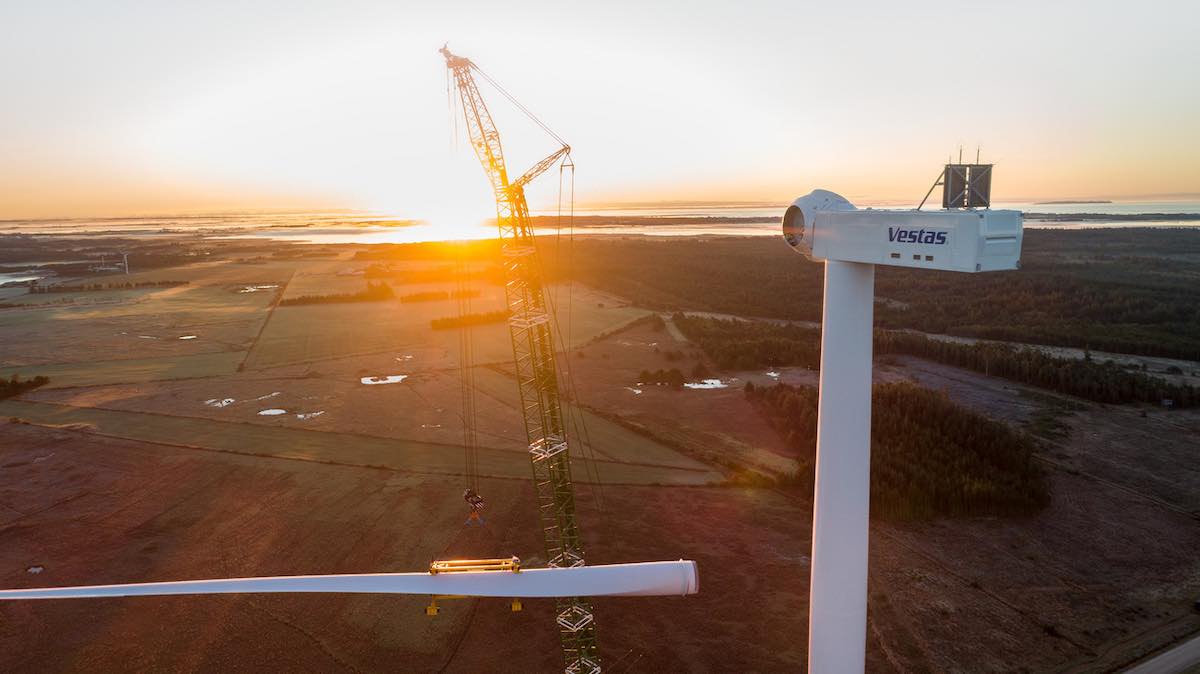Plans to develop a massive green hydrogen production hub in South Australia’s Eyre Peninsula, backed by around 14GW of solar and wind capacity, have been unveiled by Danish renewables giant Copenhagen Infrastructure Partners.
The $30 billion project, dubbed Evergreen, aims to include roughly 4GW of solar, a massive 10GW of onshore wind and 7GW of hydrogen electrolysis capacity in the SA region bookended by the Spencer Gulf and the Great Australian Bight, and with the Gawler Ranges to the north.
It adds to what CIP vice president Matthew Stuchbery says is now a 30GW development pipeline that the Danish renewables behemoth is working up in Australia, including the more advanced Murchison Renewable Hydrogen Project in WA.
“We’re quite a way from any final investment decision on [Evergreen] but we’ve been out there for a year, a year and a half, really focusing on the people – the farmers, traditional owners – to make sure that we we address their concerns and their aspirations,” Stuchbery told RenewEconomy on Thursday.
“But with that said, we think we can comfortably do around …14GW – or 1600 turbines – and the equivalent solar to balance it out.”
Stuchbery says that for the wind and solar, CIP has been focusing on Crown Land out the back of Iron Knob, northwest of Whyalla, where there are massive pastoral stations and the terrain is relatively flat.
“It’s a great spot for for wind, and everywhere is a great spot for solar,” he says.
For the hydrogen component, the focus is more on Whyalla – where CIP will compete for space with other big hitters including Fortescue and French giant Total, to name just two.
“Everyone’s looking at Whyalla and we will do the same in the first instance. I think there’s plenty of land there for everyone to play with,” Stuchbery says.
“But the first thing that we want to do is get met masts up in the ground … [because] competitive hydrogen requires deeply competitive electricity prices.”
Another priority will be to move beyond early “discrete conversations” with traditional owners and farmers to engage the broader community on the CIP’s plans for the region.
The Eyre Peninsula is the traditional home to the Barngarla, Nauo and Wirangu peoples and Stuchbery says there is a lot of Native Title on the land the company is looking at for Evergreen.
Hydrogen policy support steps up
The news of CIP’s Eyre Peninsula plans coincides with the SA government’s unveiling of plans to fast-track the “next wave” of hydrogen and renewable energy project development in the state, including through a “clear competitive tender process” for government-owned land and water.
In a draft Hydrogen and Renewable Energy Bill published this week, the Malinauskas Labor government is seeking feedback on a proposal to streamline the process for the development of large-scale wind and solar and commercial hydrogen production projects in South Australia.
The plan is to establish a “one window to government” to bring project planning and development steps like land access, environmental impacts and Native Title rights into a single regulatory process.
CIP’s new plans also follow the federal budget allocation of $2 billion for green hydrogen projects, which federal climate and energy minister Chris Bowen described as “just a downpayment” on what Australia needs to do to compete with the US and other countries.
Stuchbery says the assurances from the Albanese government that more will be done over the coming 12 months to ramp up Australia’s green hydrogen industry are welcome and “incredibly sensible.”
“There’s a lot that can be done,” he told RenewEconomy. “We can’t match the money that the US is throwing at it, so we need to obviously look creatively and sensibly at what our competitive advantages are.”
More focus on nuts and bolts – and supply chain
More broadly, on renewables in general, Stuchbery also sees room for improvement.
“I think there are things that still require focus. I think one of those is strengthening …and aligning approvals processes across the country,” he says.
“There’s been a lot of movement on headline policy and targets. And now I think there needs to be a bit of a focus on the nuts and bolts to get these projects through to construction.”
Supply chain constraints are another major concern for projects the scale of Evergreen and Star of the South.
“There needs to be a step change in how Australia thinks about supply chain, because the port constraints and things like that will just mean that they cannot get built,” says Stuchbery.
“There needs to be a really sensible and concerted effort to look at how much can be done onshore – and that’s why we’re thinking about something of sufficient scale that can attract that supply chain.
“If we put the… 1600 turbines on the table, then you can have a really serious discussion.”










